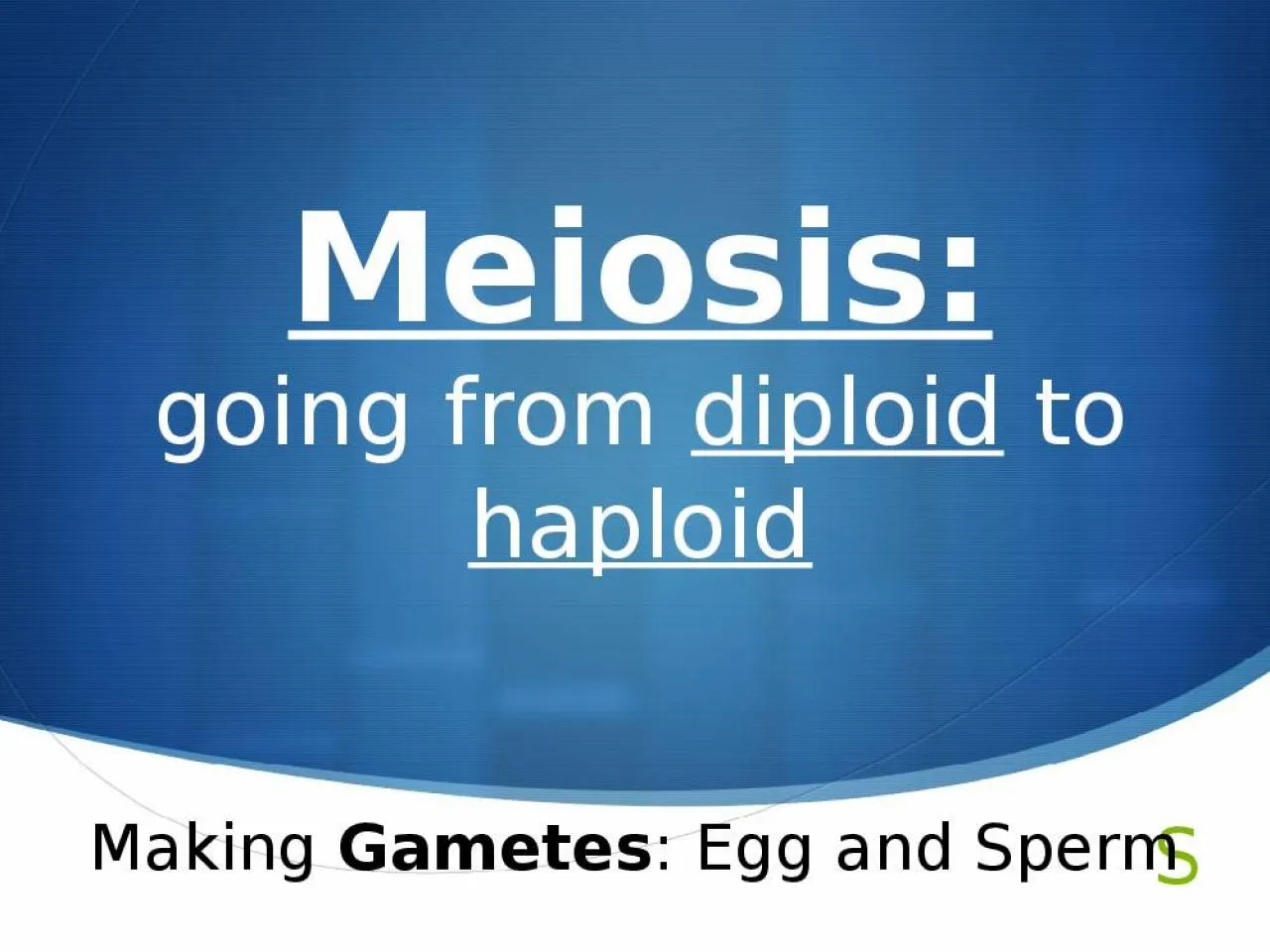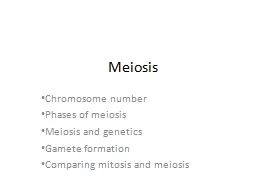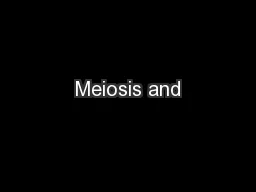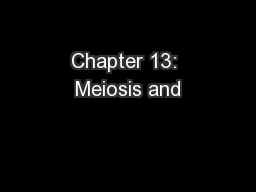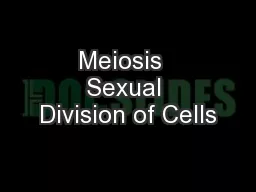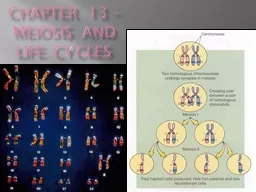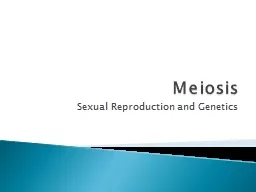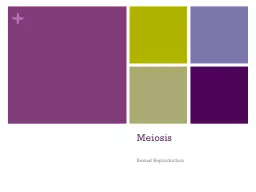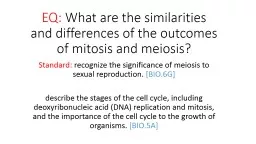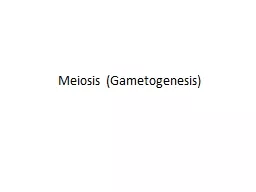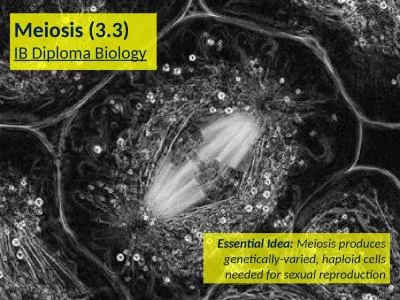PPT-Meiosis: going from diploid
Author : audrey | Published Date : 2024-07-02
to haploid Making Gametes Egg and Sperm The cell cycle remains the same except G1 S G2 Division meiosis amp cytokinesis Meiosis Overview Process of nuclear
Presentation Embed Code
Download Presentation
Download Presentation The PPT/PDF document "Meiosis: going from diploid" is the property of its rightful owner. Permission is granted to download and print the materials on this website for personal, non-commercial use only, and to display it on your personal computer provided you do not modify the materials and that you retain all copyright notices contained in the materials. By downloading content from our website, you accept the terms of this agreement.
Meiosis: going from diploid: Transcript
Download Rules Of Document
"Meiosis: going from diploid"The content belongs to its owner. You may download and print it for personal use, without modification, and keep all copyright notices. By downloading, you agree to these terms.
Related Documents

